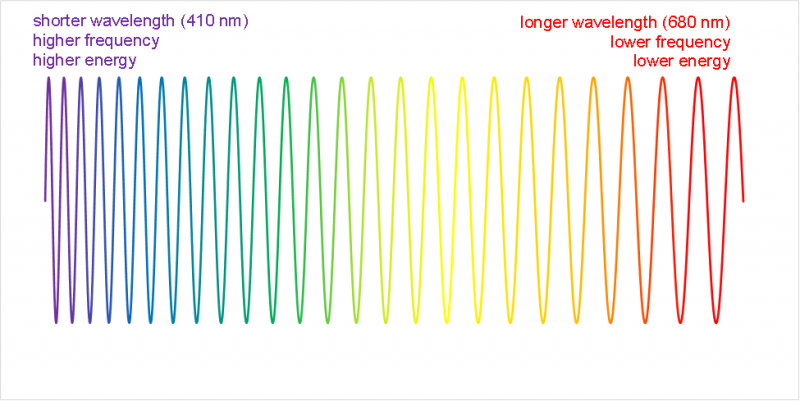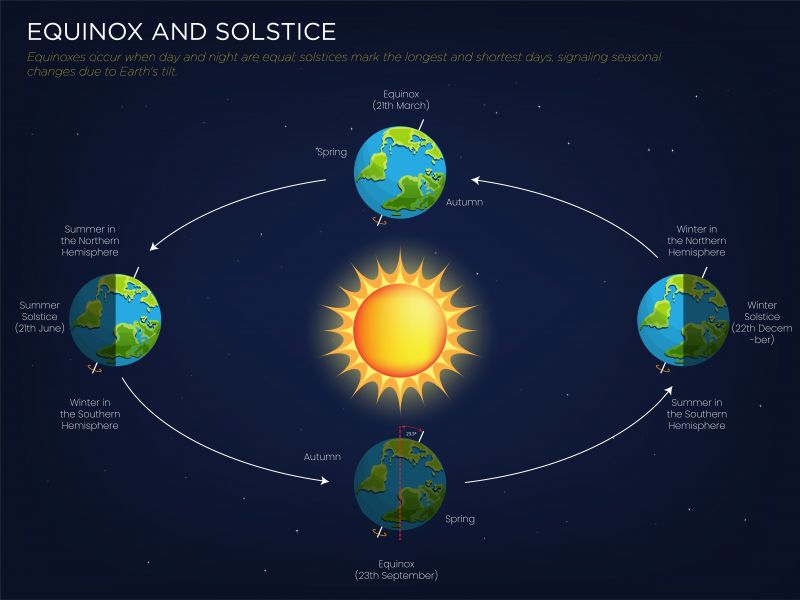The colours are brighter and bolder, and they linger longer in the sky.
Why are sunsets “better” at some times of the year compared to others? We can use science to explain this.
There are many ingredients for a “good” sunset, but the main three are clear skies, low humidity, and the Sun sitting low in the sky.

From light to colour
To understand why we get such vibrant sunsets in the colder months of the year, we first need to know how colours appear in the sky.
All visible light is actually energy that travels in waves; the length of those waves determines the colour that our eyes see.
Although sunlight might look white to us, it’s actually a mix of different wavelengths of light that make up all the visible colours – from fiery reds and oranges (longer wavelengths) to deep blues and purples (shorter wavelengths).

These individual colours become visible when sunlight is “scattered”, which is precisely what happens when it passes through the invisible gas molecules in Earth’s atmosphere – mostly nitrogen and oxygen.
When sunlight hits these molecules, it’s absorbed and shot back out (scattered) in different directions. Blue and violet light is scattered more strongly than red and orange light – this is also why the sky looks blue during the day.

The path of the Sun
In the middle of the day when the Sun is high in the sky, sunlight travels a more direct path through the atmosphere.
But when the Sun is closer to the horizon, the path is less direct. This means that during sunrises and sunsets, sunlight travels through more of Earth’s atmosphere. And more atmosphere means more scattering.
In fact, during sunsets, the blue and violet light encounters so many oxygen and nitrogen molecules that it is completely scattered away. What we’re left with is the longer wavelengths of light – the reds and oranges. In other words, more atmosphere means more fiery sunsets.
But why are sunsets especially magnificent during winter? One reason is the Sun’s position in the sky during different times of the year.
Earth rotates on its axis every 24 hours, giving us day and night. But this axis isn’t perfectly “upright” relative to the Sun – it’s tilted at an angle of about 23.5 degrees. This tilt is why we have seasons. The southern hemisphere is tilted towards the Sun around the start and end of the calendar year (southern summer), and away from the Sun around the middle of the year (southern winter).
Because of this tilt, the Sun sits lower in the sky during winter, which is why the days are shorter. And because the Sun sits lower, it spends more time near the horizon as it rises and sets. That’s why winter sunsets often seem to last longer.

The quality of the air
Humidity and air quality also play a big role when it comes to vibrant winter sunsets.
In winter, humidity is typically much lower than in the warmer summer months, meaning there’s less moisture in the air. Humid air often contains tiny water droplets, which can scatter incoming sunlight. This scattering is slightly different to how the oxygen and nitrogen molecules scatter light – here, even red and orange light can be affected.
When humidity is high, the extra scattering by these small water droplets can cause sunsets to appear softer or more washed out.

In drier winter air, with fewer of these water droplets in the way, sunlight can travel through the atmosphere with less interference. This means the colours can shine through more vividly, making for crisper and more vibrant sunsets.
If you’re looking to a catch a spectacular sunset, you’ll want to wait for a nice, clear winter’s evening. Cloud cover and air pollution can block the sunlight and mute the colours we see.
So the next time you find yourself wrapped up in a warm jumper at dusk, be sure to look up – there could be a spectacular light show playing out just above you.
This article is republished from The Conversation under a Creative Commons license. Read the original article.
Related Articles

The secret lives of Sugarloaf koalas
“Tree stars” in the night sky revealed a hidden koala colony, nestled deep within Sugarloaf’s bushland.
Read more

Tackling the chemicals we can’t see: PFAS
PFAS contamination is persistent, but so is the determination of scientists working on solutions to remediate it.
Read more

Girls to the front
Female high school students in the Hunter are being inspired to pursue meaningful careers in STEM thanks to a unique program created over a conversation at a campus cafe.
Read more

How can you stay safe from cyber attacks? Here are 2 simple checklists from experts
“Cyber security” may sound like a far-off worry for big corporations or telcos, but that’s far from the case.
Read more

Can we find hidden graves of murder victims with soil imaging? New Australian study gives it a try
To avoid being caught, murderers often attempt to hide bodies using various methods. This can include shallow or deep burials, submersion in water, encasing in concrete or even disposing of remains in rubbish bins and suitcases.
Read more

New video shows sharks making an easy meal of spiky sea urchins, shedding light on an undersea mystery
Long-spined sea urchins have emerged as an environmental issue off Australia’s far south coast.
Read more